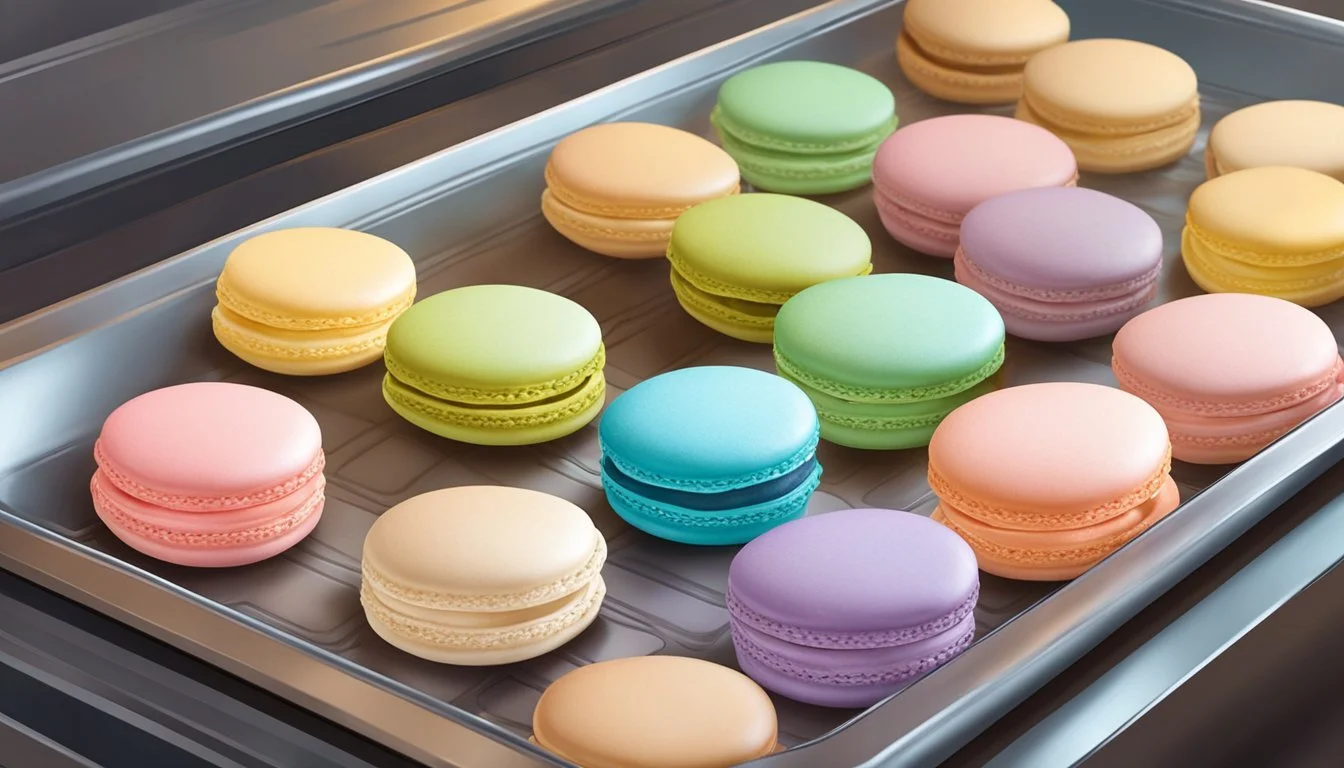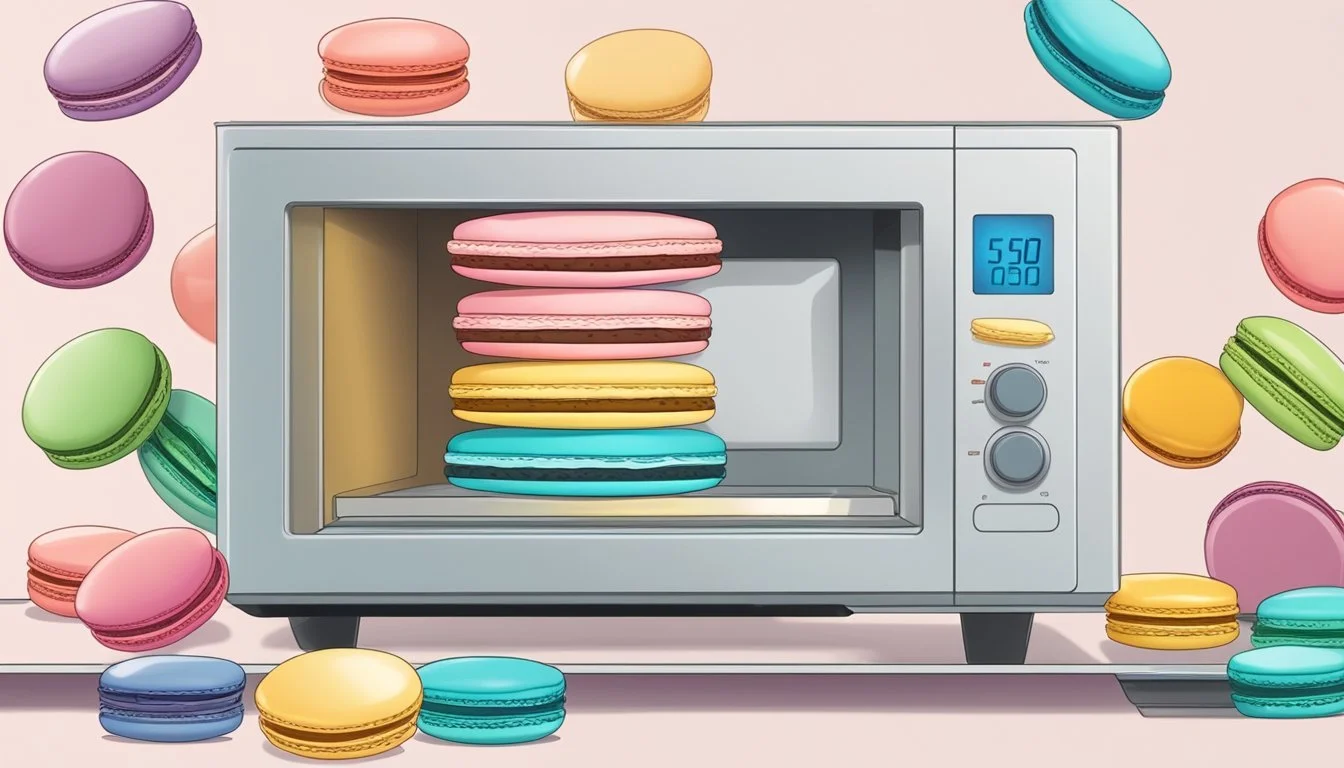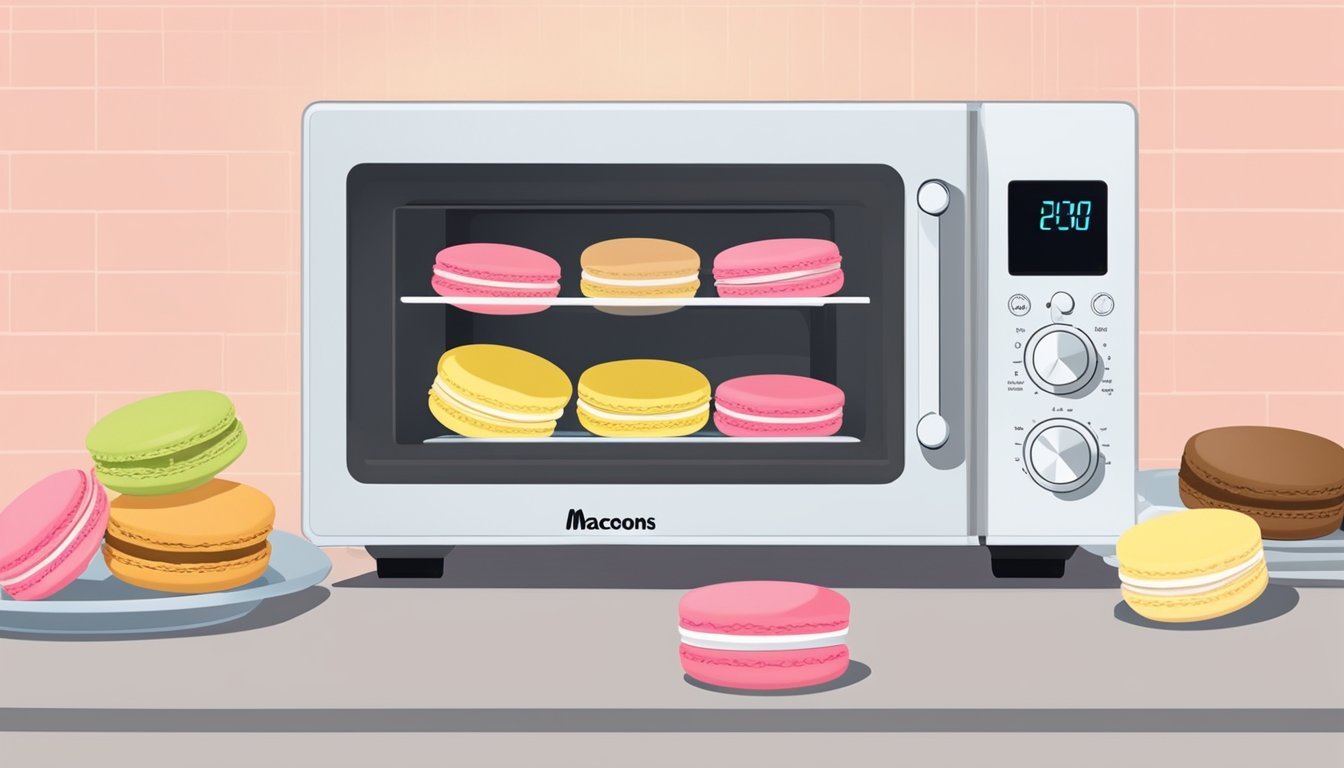Best Way to Reheat Macarons
Ensuring Softness and Chewiness
Macarons are a delicate confection known for their vibrant colors and elegant appearance, often served to guests on special occasions. These sweet meringue-based treats have their origin in France and have garnered worldwide admiration for their unique texture, which combines a crisp shell with a soft and chewy interior. However, maintaining the perfect texture can be challenging, particularly when macarons are no longer fresh out of the oven.
To restore the soft and chewy quality of macarons that may have become slightly stale or tough, reheating them properly is crucial. It is a fine balance to ensure they are gently warmed without altering their iconic texture. Since they are sensitive to moisture and temperature, understanding the best method for reheating macarons is key to enjoying them as if they were freshly made.
Understanding Macarons
In discussing the best ways to reheat macarons, it is essential to grasp their delicate nature and how various factors influence their quality.
The Basics of Macarons
Macarons are elegant meringue cookies made primarily from almonds, sugar, and egg whites. The process of baking these treats is meticulous, requiring precise technique to achieve the characteristic smooth top, ruffled circumference—known as the "foot"—and tender yet crispy texture. After cooling, macarons are typically filled with chocolate ganache, buttercream, or jam to create a sandwich cookie that is both chewy and flavorful.
Importance of Texture and Flavor
The texture of a macaron is a balance between a crispy exterior and a chewy interior. Flavors are often bold and complemented by the chosen fillings like chocolate ganache or buttercream, which add to the macaron's richness and depth. Maintaining this precise texture and the intensity of flavor is key to the macaron's identity and taste experience.
Macaron Longevity
Freshness and shelf life are critical for macarons. Ideally eaten within a few days of baking, the shelf life can be extended via proper storage methods. Macarons can remain fresh at room temperature for up to 48 hours, in the refrigerator for a week, and several months if stored in the freezer. Ensuring that they are sealed away from moisture, humidity, and odors is crucial to maintain their texture and flavor.
Common Storage Missteps
When storing macarons, key missteps to avoid include exposing them to moisture and humidity, which can lead to sogginess. Macarons must be kept away from strong odors, as the almond base can absorb them, altering the flavor. Failing to seal them properly can also make them stale or undesirably soggy. The choice of storage impacts reheat results and should cater to maintaining the macaron's crispy and chewy texture characteristics.
Proper Macaron Storage
Storing macarons correctly is essential to keeping them soft and chewy. Using the right techniques and materials can preserve their texture and flavor.
Short-Term Storage Solutions
For macarons that will be consumed within a few days, room temperature and an airtight container are key. They should be separated between layers of parchment paper to prevent sticking and placed in a storage container with an airtight seal to maintain freshness.
Place macarons in a single layer on parchment paper.
Layer with another piece of parchment paper if stacking is necessary.
Seal in an airtight container to keep out moisture and other contaminants.
Freezing for Longer Storage
Freezing macarons is an effective way to extend their shelf life up to three months. To prevent freezer burn, wrap them with plastic wrap and then place them inside a plastic bag or airtight container before storing them in the freezer.
Wrap each macaron individually in plastic wrap.
Place wrapped macarons in a plastic bag or airtight container.
Label the container with the date before placing it in the freezer.
Avoiding Moisture Buildup
To avoid moisture buildup, which can make macarons soggy, include a piece of paper towel in the container to absorb excess moisture. Ensure that the seal on the container is tight and intact.
Insert a paper towel underneath the parchment layer inside the container.
Check that the container's seal is free of cracks or gaps.
Choosing the Right Containers
The type of container used for storage can drastically affect the quality of macarons. Use either glass containers which are non-porous and prevent odors from seeping in, or BPA-free plastic containers that are food safe. For individual servings or gifts, macaron boxes with compartments can protect them from damage and maintain their shape.
Select glass or BPA-free plastic containers with a tight-fitting lid.
Use macaron boxes with compartments for gifting or convenient portions.
Macaron Preparation for Reheating
Proper preparation of macarons for reheating is crucial to maintaining their delicate texture and flavor. This involves carefully thawing frozen macarons and considering whether to separate the shells from the fillings.
Thawing Frozen Macarons
Before reheating, frozen macarons must be brought to room temperature to prevent sudden temperature changes that could alter their texture. It is recommended to remove the macarons from the freezer and allow them to thaw gradually for a couple of hours. They should remain in their airtight container during this time to avoid exposure to moisture, which could make them soggy.
Separating Shells from Fillings
If one is dealing with filled macarons, careful separation of the shells from the fillings might be necessary, especially if the fillings are sensitive to heat. While macaron shells can typically withstand a brief reheating process to restore crispness, their fillings could melt or become compromised. Therefore, if reheating is essential, gently separating the two components can help in effectively restoring the macaron's ideal texture.
Best Reheating Methods
When reheating macarons, it's crucial to use methods that preserve their soft and chewy texture without making them dry. The goal is to gently warm the macarons to a pleasing temperature without altering their delicate structure.
Using the Oven
To effectively reheat macarons in the oven, one should:
Preheat the oven to a low temperature, typically around 300°F (150°C).
Place the macarons on a baking sheet lined with parchment paper.
Heat them for 1-2 minutes. Watching closely is essential since ovens may vary.
This method aids in distributing heat evenly, ensuring the macarons become warm without turning dry or crispy.
Alternative Warming Techniques
Here are some alternate warming options for macarons:
Airtight Container: Store macarons in an airtight container with a piece of bread or an apple slice to help retain moisture. Before serving, let them rest at room temperature to enhance their natural texture.
Cool, Dry Place: Keeping macarons in a cool, dry place is sometimes all that's needed. If they have been stored correctly, simply leaving them out to come to room temperature can sufficiently restore their softness.
Post-Reheating Best Practices
Proper care after reheating macarons is essential to retain their optimal texture and taste. This section outlines how one can ensure the ideal consistency and maintain the flavor and appearance of the macarons.
Ensuring Ideal Consistency
Macarons should ideally remain chewy with a slight crispness on their delicate shells even after reheating. To achieve this, they need to cool down gradually. One could place them on a wire rack immediately after reheating, which allows for even air circulation and prevents the macarons from becoming soggy due to trapped steam. The center should maintain its chewiness, so avoiding overheating is crucial as it can lead to a dry, crumbly texture.
Maintaining Flavor and Appearance
Flavor preservation is vital—the reheating process should not alter the subtle almond base and accompanying fillings. Fillings should stay intact, neither melting out nor becoming too hard. As for appearance, macarons are known for their vibrant, pretty aesthetic. Post-reheating, they should not show signs of browning or discoloration. To protect the flavor and appearance, reheating must be done at a controlled temperature and for a short period. Wrapping macarons individually in parchment paper before reheating can help maintain their original quality and prevent them from sticking together or absorbing unwanted odors.
Additional Tips and Tricks
When reheating macarons for an event or celebration, it's crucial to maintain their delicate texture and flavor. The following subsections offer targeted advice for presenting macarons at their best during special occasions and finding the best macaron resources.
Serving Macarons at Events
Optimal Presentation: For events, display macarons in a way that preserves their quality until serving. Transfer macarons from the freezer to the refrigerator a day before the event, and then bring them to room temperature an hour prior to serving.
Consider Guests’ Preferences: When ordering from a bakery or preparing them at home, consider a variety of flavors and colors to cater to guests' diverse tastes. For celebration-centric events, customizing macarons to match the theme can add a personalized touch.
Macaron Resources
Where to Find Supplies:
Bakeries: Can provide expert advice and high-quality macarons for your events.
Stores: Offer a selection of macaron ingredients for those making them at home.
Educational Material:
Online tutorials and cookbooks can be invaluable for learning the intricacies of macaron preparation.
Local baking classes might offer hands-on experience for homemade macaron enthusiasts.
By leveraging these tips and resources, one can present macarons in their most delightful form, whether store-bought or homemade, ensuring their soft and chewy texture remains intact.
Final Thoughts
When reheating macarons, it's crucial to remember that the key to maintaining their delightful texture is gentle warmth. One must approach this process with a confident understanding that proper storage prior to reheating is just as important as the reheating method itself.
Here are the recommended storage techniques:
Individual Wrapping: For optimal freshness, consider wrapping each macaron in cling film before placing it in an airtight container.
Airtight Containers: This prevents moisture and air from altering the macaron's texture.
Correct Temperature: Store at room temperature for a short duration, or freeze for long-term storage.
When it's time to reheat:
Preheat the oven to a low temperature (around 200°F or 95°C).
Turn off the oven and place the macarons on a baking sheet.
Leave them for 10-15 minutes, carefully monitoring to avoid making them too crisp.
These methods reflect a knowledgeable approach to preserving the macarons' dessert appeal. By using these storage methods, reheating can restore the soft interior and lightly crisp shell that make macarons a special treat.
Consistently applying these techniques ensures that one's macarons can be enjoyed at their best, reaffirming the baker's confidence in serving a dessert that is as close to perfection as possible.









